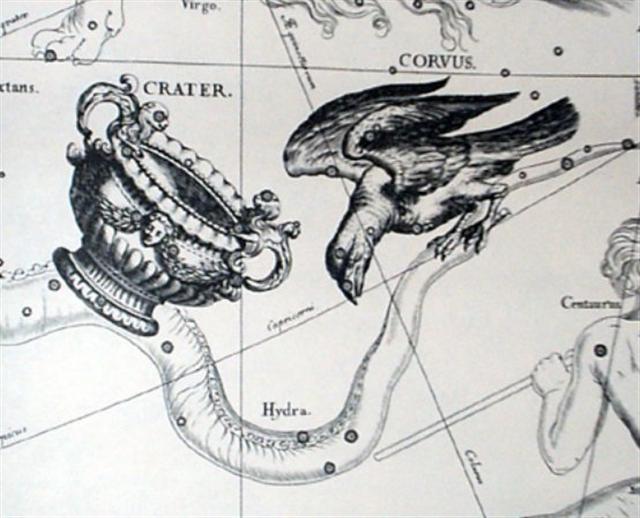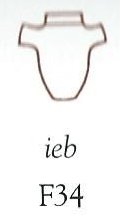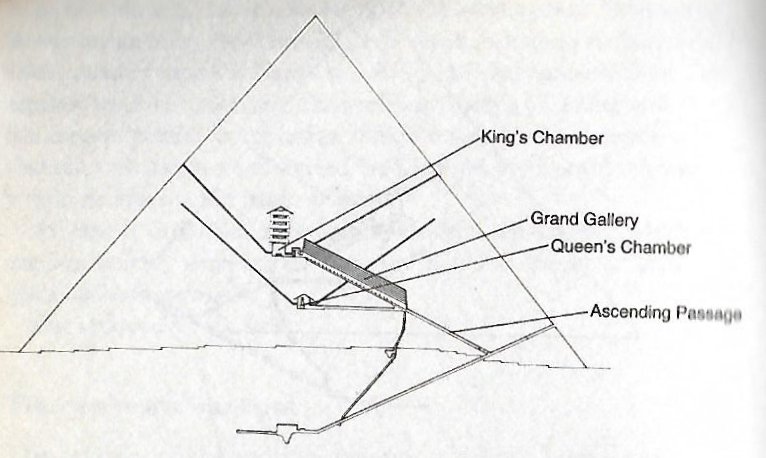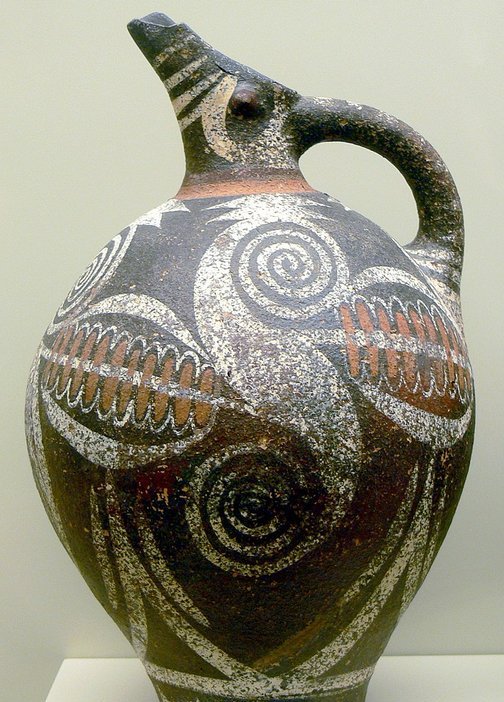|
584
15 Once again. According to the Chinese list of 28 stations the star Spica in the constellation of Virgo marked the beginning.
This place was below the celestial equator and should therefore be connected with the ecliptic path travelled by the Sun and the planets. 364 / 28 = 13. But the calendar of the Sun (of Julius Caesar and updated by the XIIIth Pope) carried only 12 months. ... The author of the Book of Enoch in his treatise on astronomy and the calendar also reckoned a year to be 364 days, though he pronounced a curse on all who did not reckon a month to be 30 days long ... ... Nut, whom the Greeks sometimes identified with Rhea, was goddess of the sky, but it was debatable if in historical times she was the object of a genuine cult. She was Geb's twin sister and, it was said, married him secretly and against the will of Ra. Angered, Ra had the couple brutally separated by Shu and afterwards decreed that Nut could not bear a child in any given month of any year. Thoth, Plutarch tells us, happily had pity on her. Playing draughts with the Moon, he won in the course of several games a seventy-second part of the Moon's light with which he composed five new days. As these five intercalated days did not belong to the official Egyptian calendar of three hundred and sixty days, Nut was thus able to give birth successively to five children: Osiris, Haroeris (Horus), Set, Isis and Nepthys ...
... When the stones are brought back to the ceremonial house, two diviners start the ritual by placing the stones on a table in a careful pattern that reproduces the schematic of the universe. At the same time, helpers under the table replace last year's diagram with the new one. They believe that by placing the cosmic diagram under the base of God at the center of the world they demonstrate that God dominates the universe ...
Number 13 had to be covered up. It was unlucky because Enoch had put a curse on the 13th month. It should be hidden behind a square piece of table cloth. 364 - 12 * 30 = 4.
... Interestingly, since another meaning of shi is 'death', the number 4 is considered unlucky. For example, the floor numbering in hotels sometimes jumps mysteriously from 3 to 5; it is also considered unlucky to give four of something as a present ... The current place for 24h / 4 = 6h went through the Auriga constellation.
And the constellation of the Unlucky Charioteer (Auriga) carried no Sun Horse.
Instead the top of the line at the final of the first quarter of the year had a star named the Lord of Created Beings (Praja-pāti).
It was not a Sun King, it was a Lord: ... To follow up the long and laborious way leading from Rigvedic Mitrāvaruna (dual) to the latest days of the Roman Empire where we still find a gloss saying 'mithra funis, quo navis media vincitur' - 'mithra is the rope, by which the middle of the ship is bound', would overstep the frame of this essay by far. Robert Eisler relying upon his vast material, connected this fetter or 'rope', mithra, right away with the 'ship's belt' from the tenth book of Plato's Republic. Of the inseparable dual Mitrāvaruna, Varuna is still of greater relevance, particularly because it is he who 'surveyed the first creation' (RV 8.41.10), he who hid the Ocean - Ovid had it that the sources of the Nile were hidden - and he who is himself called 'the hidden Ocean' (RV 8.41.8). Varuna states about himself: 'I fastened the sky to the seat of the Rita' (RV 4.42.2). And at that 'seat of Rita' we find Svarnara, said to be 'the name of the celestial spring ... which Soma selected as his dwelling'.¹ ¹ ... Soma is addressed as 'lord of the poles', and to Agni is given the epithet svarnaram thrice ... But we did hear about 'Agni, like the felly the spokes, so you surround all the gods', and Soma and Agni supplement each other ... This is no other 'thing' than Hvarna (Babylonian melammu) which the 'bad uncle' Afrasiyab attempted to steal by diving to the bottom ot Lake Vurukasha, although Hvarna belonged to Kai Khusrau ... Thus in whichever dialect the phenomenon is spelled out, the fallen ruler of the Golden Age is held to dwell nearest to the celestial South Pole, particularly in Canopus which marks the steering oar of Argo, Canopus at the 'confluence of the rivers'. This is true whether Varuna fastened the sky to the seat of the Rita (and his own seat), whether Enki-Ea-Enmesharra, dwelling in Eridu, held all the norms and measures (Rita, Sumerian me: Akkadian: parsu) - Thorkild Jacobsen called him very appropriately the 'Lord modus operandi' - or whether Kronos-Saturn kept giving 'all the measures of the whole creation' to Zeus while he himself slept in Ogygia-the-primeval ... The precession of the place for the ancient northern spring equinox had caused a shift to the region of the solstice. Counting with 16 days before the relevant stars would return to visibility the current *78 for Capella (and Rigel) will translate into a shift from June 7 (158) to the ancient calendar day 174 (June 23). The prow of Argo (Hvarna) first disappeared below the waves and then the ancient ship sank straight down.
The fresh waters of spring were destined to be finally consumed by Varuna (Canopus,*95):
... The Pythagoreans make Phaeton fall into Eridanus, burning part of its water, and glowing still at the time when the Argonauts passed by. Ovid stated that since the fall the Nile hides its sources. Rigveda 9.73.3 says that the Great Varuna has hidden the ocean. The Mahabharata tells in its own style why the 'heavenly Ganga' had to be brought down. At the end of the Golden Age (Krita Yuga) a class of Asura who had fought against the 'gods' hid themselves in the ocean where the gods could not reach them, and planned to overthrow the government. So the gods implored Agastya (Canopus, alpha Carinae = Eridu) for help. The great Rishi did as he was bidden, drank up the water of the ocean, and thus laid bare the enemies, who were then slain by the gods. But now, there was no ocean anymore! Implored by the gods to fill the sea again, the Holy One replied: 'That water in sooth hath been digested by me. Some other expedient, therefore, must be thought of by you, if ye desire to make endeavour to fill the ocean ...
The culmination of the empty vessel (Alkes, α Crateris, *165) at heliacal Hamal indicated that fresh water was close by..
... There was no water in the village. The lakes and rivers were dry. Raven and Crow, two young girls who were having their first menstrual courses, were told to go and draw water from the ocean. Finding the journey too long, Raven decided just to urinate into her basket-bucket. She decieved no one and was severly scolded. Crow returned much later but with drinking water. As a punishment, Raven was condemned never to find water in the summer; only in winter would she find something to drink. For that reason the Raven never drinks during the hot months; she speaks with a raucous voice because of her dry throat ... The 19th Chinese station was significantly named Net and it connected the star Ain (*65) with the Crow. The rising Sun ruled for a quarter of the year before he reached maturiy and was finished off. ... The little birds now did their best to comply with Maui's wish. They sat as still as they could, and held their beaks shut tight, and tried not to laugh. But it was impossible. It was the way Maui went in that gave them the giggles, and in a moment little tiwaiwaka the fantail could no longer contain himself. He laughed out loud, with his merry, cheeky note, and danced about with delight, his tail flickering and his beak snapping. Hine nui awoke with a start. She realised what was happening, and in a moment it was all over with Maui. By the way of rebirth he met his end ...
In other words the plumb bob (F34) at the rope (mithra) bound to the middle of the celestial ship, viz. Canopus, marked where the first quarter of the year ended and the sky would then become covered by rain clouds.
Here the Sky Garment had to be changed. ... Note that rain and stars are singled out as the characteristics of the sky: we have seen that the ancients of Mesopotamia and in India shared the concept of a divine 'sky garment' consisting either of rain clouds or of the starry sky ...
... It was 4 August 1968, and it was the feast day of Saint Dominic, patron of Santo Domingo Pueblo, southwest of Santa Fe. At one end of the hot, dusty plaza, a Dominican priest watched nervously as several hundred dancers arranged in two long rows pounded the earth with their moccasined feet as a mighty, collective prayer for rain, accompanied by the powerful baritone singing of a chorus and the beat of drums. As my family and I viewed this, the largest and in some ways the most impressive Native American public ceremony, a tiny cloud over the Jémez Mountains to the northwest got larger and larger, eventually filling up the sky; at last the storm broke, and the sky was crisscrossed by lightning and the pueblo resounded with peals of rolling thunder ... 216 (August 4) - 30 (360 / 12) = 186 = 175 (Day of St John) + 11 → 2 * 186 = 372 → 3 * 72 = 216 = 210 + 6. 216 (August 4) - 41 (Bharani, 41 Arietis, the head of the Northen Fly) = 175 (*95):
When the rain clouds covered the face of the Sun it was necessary for Man to take action, to take a step forward..
In June 7 (= June 23 - 16) the culminating star to be observed was Thuban.
Water is heavy and in June 7 a Jar filled with water would serve perfectly well as the proper plumb bob (merkhet, F34).
|
|||||||||||||||||||

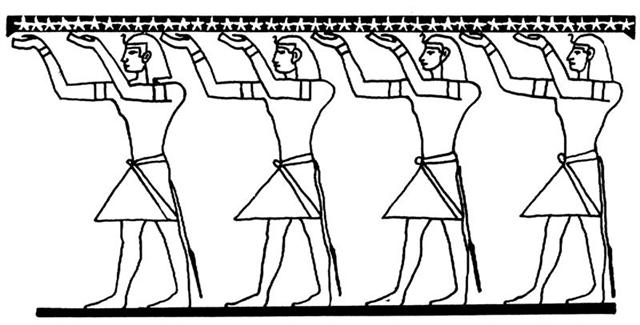


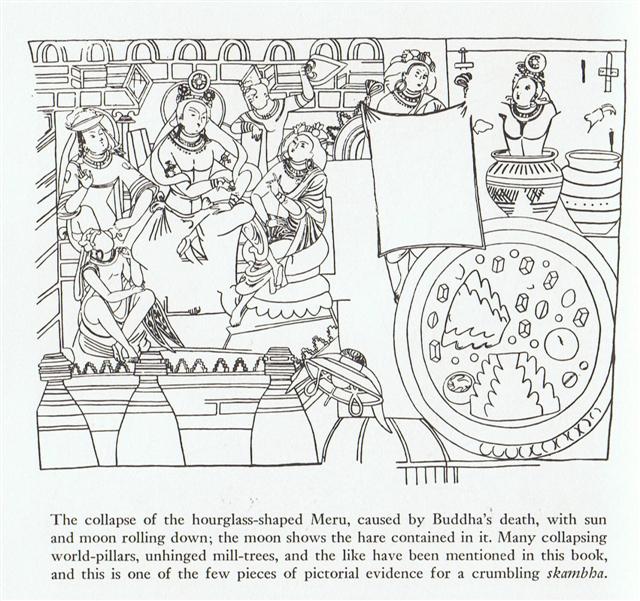


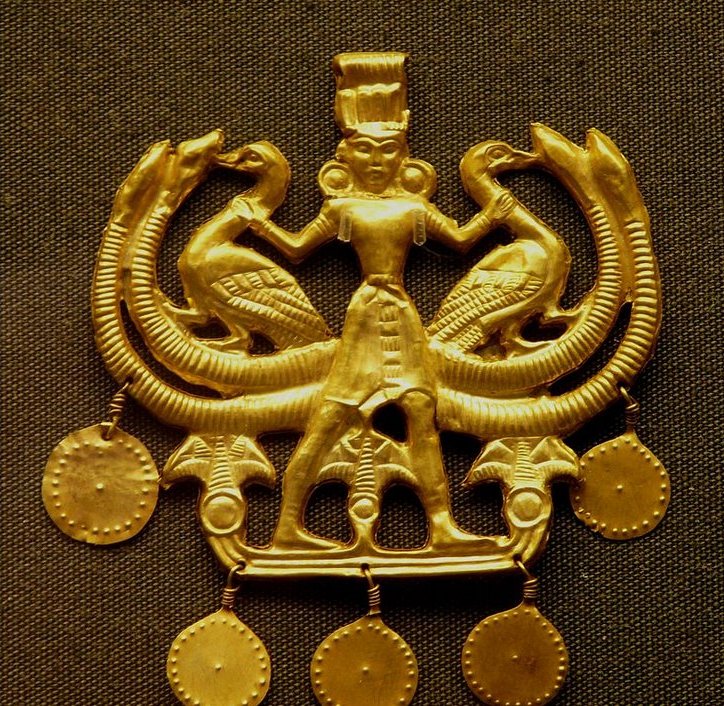
.jpg)



